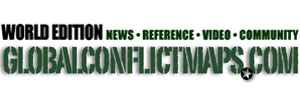Authorities on three continents thwarted multiple terrorist attacks aimed at the United States from Yemen on Friday, seizing two explosive packages addressed to Chicago-area synagogues and packed aboard cargo jets.
Multiple terrorist attacks aimed at the United States from Yemen on Friday were managed by seizing two explosive packages addressed to Chicago-area synagogues and loaded aboard cargo jets. The multi-continent plot triggered worldwide fears that al-Qaida is launching a major new terror campaign.
One of the packages was found aboard a cargo plane in Dubai, the other aboard a cargo plane in East Midlands, north of London, Friday. Preliminary tests indicated the packages contained the powerful industrial explosive PETN, the same chemical used in the 2009 Christmas attack.
U.S. authorities conducted searches of aircraft in Philadelphia, Newark, N.J., and New York City. No explosives were found in any of the planes that reached the United States, including an Emirates Airlines passenger jet that was escorted by fighter jets from Canada to New York.
A suspected plot was monitored after Saudi Arabian intelligence picked up information related to Yemen and forwarded the information to the U.S.
U.S. intelligence officials warned last month that terrorists planned to mail chemical and biological materials in an attack on America and other Western countries using the mail. The alert came in a September 23, 2010 bulletin from the Homeland Security Department.
Pentaerythritol tetranitrate (PETN), also known as PENT, PENTA, TEN, corpent, penthrite (or — rarely and primarily in German — as nitropenta), is one of the most powerful high explosives known, with a relative effectiveness factor (R.E. factor) of 1.66. PETN is known for its Brisance.
Brisance is a measure of the rapidity with which an explosive develops its maximum pressure. Brisance is the shattering capability of an explosive — a term that originates from the French verb “briser” or break or shatter. Brisance is of practical importance for determining the effectiveness of an explosion in fragmenting shells, bomb casings, grenades, structures, and the like.
A brisant explosive attains its maximum pressure so rapidly that a shock wave is formed. The net effect is to shatter (by shock resonance) surrounding material or with object in contact with a resulting supersonic detonation wave. Brisance is a measure of the shattering ability of an explosive and is not necessarily correlated with the explosive’s total work capacity.
A YouTube channel that claims a video is a demo of 20 g of PETN (2 meters of Detcord at 10 g/m) …
Two meters of detcord around a tree with detonation initiated by an electronic remote firing system.
Detonating cord (also called detonation cord, detacord, det. cord, detcord, primer cord or sun cord) is a thin, flexible tube with an explosive core. Detcord is a high-speed fuse which explodes, rather than burns, and is suitable for detonating high explosives, usually pentaerythritol tetranitrate (PETN, Pentrite). The velocity of detonation is sufficient to use it for synchronising multiple charges to detonate almost simultaneously even if the charges are placed at different distances from the point of initiation. Detcord is used to reliably and inexpensively chained together for multiple explosive charges. Typical uses include mining, drilling, and demolitions. It resembles regular clothesline.
